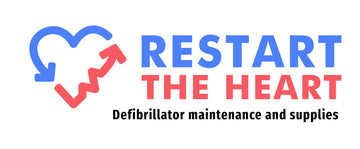The Importance of AEDs in Schools: Why Every School Needs a Defibrillator
Schools play a vital role in shaping the minds and futures of young people. As a hub of learning and personal growth, schools are responsible for providing a safe and nurturing environment for students, faculty, and staff. One important aspect of safety that schools should not overlook is being prepared for medical emergencies, particularly sudden cardiac arrest (SCA), which can happen to anyone at any time, irrespective of age or fitness level.
Automated external defibrillators (AEDs) are life-saving devices that can be deployed in situations involving SCA to quickly administer a therapeutic shock and potentially restart a victim's heart. Presenting AEDs in school settings can minimise response time during cardiac emergencies, dramatically improving survival rates and promoting a heart-safe learning environment.
In this blog, we will explore the significance of AEDs in schools and discuss the numerous advantages these devices offer when implemented in educational institutions. We will also provide practical tips and guidance for school administrators and teachers on setting up an effective AED program to ensure the well-being of students and school personnel.
Moreover, we'll highlight how Restart the Heart, a trusted Australian defibrillator supplier, can be a valuable partner for schools in selecting suitable AEDs, maintaining these devices, and providing training and support for school staff. By elucidating the importance of AEDs in schools, we hope to encourage educational stakeholders to embrace creating a safer learning environment for all.
Benefits of AEDs in Schools: Creating a Heart-Safe Learning Environment
The many benefits of having AEDs on school campuses demonstrate the importance of a heart-safe learning environment. Among these benefits are:
- Enhanced Student and Staff Safety: Installing AED devices on school premises improves the safety of students, teachers, and staff by ensuring they have quick access to life-saving equipment during sudden cardiac arrest emergencies.
- Increased Survival Rates: Immediate access to AEDs drastically enhances survival rates for SCA victims. The quicker an AED is applied, the greater the chances of survival and positive recovery outcomes.
- Improved School Safety Culture: With AED accessibility, schools are committed to the well-being of all individuals on campus. Investing in safety equipment fosters an enhanced safety culture that positively impacts students, parents, and faculty.
- Compliance with Legislation: Additionally, implementing AEDs in schools can help educational institutions adhere to legislative requirements as more jurisdictions increasingly mandate AED availability on school grounds.
Implementing an AED Program in Schools: Essential Steps in Establishing a Successful AED Program
For schools to create a successful AED program, it's vital to address these key steps:
- Choose the Right AED Device: Collaborate with a trusted AED supplier, such as Restart the Heart, to select an AED that is user-friendly, effective, and compliant with Australian regulations.
- Provide Personnel Training: Organise certified CPR and AED training sessions for teachers, coaches, and staff, ensuring a confident and competent response during an SCA emergency.
- Strategically Place AEDs: Install AED devices in highly visible locations across the school, ensuring easy access during emergencies. Key areas include sports facilities, classrooms, administration areas, and locations frequently hosting large gatherings.
- Maintain and Inspect AEDs: Develop a regular AED maintenance schedule, which includes inspecting the AEDs for damage, ensuring batteries and pads are within expiry dates, and updating software as required.
Restart the Heart Support for Schools: Your Partner in Creating a Heart-Safe Learning Environment
Schools can find invaluable support in implementing their AED programs from Restart the Heart, which can help in the following ways:
- Expert Advice on AED Selection: Restart the Heart uses its extensive industry knowledge to assist schools in choosing the most suitable AED device that meets both regulatory requirements and unique school needs.
- Comprehensive Training: Partner with Restart the Heart to organise certified AED and CPR training for teachers, coaches, and staff members, ensuring an effective response during potential SCA emergencies.
- AED Maintenance and Support: Rely on Restart the Heart for ongoing AED maintenance and device monitoring, including supplying AED pads and batteries for all brands, guaranteeing AED readiness during emergencies.
- Continuous Customer Care: As a customer-oriented organisation, Restart the Heart provides ongoing guidance to schools throughout their AED program's lifespan, ensuring successful implementation and continuous improvement.
Promoting Awareness and Early Intervention
Beyond mere AED implementation, schools must also educate students and parents about the importance of early intervention in SCA cases. Teach students to recognise signs of SCA and encourage them to respond promptly by calling for help, alerting an adult or trained staff member, and retrieving the nearest AED.
Additionally, informing parents about the school's AED program helps raise awareness of the need for a heart-safe learning environment and emphasises the institution's commitment to students' well-being.
Conclusion
Integrating AEDs into schools highlights a growing commitment to promoting heart-safe learning environments for students, teachers, and staff. With the support and guidance of Restart the Heart, schools can access vital information and assistance in developing and maintaining their AED programs, ensuring the safety and well-being of all individuals on campus.
Investing in AEDs demonstrates the importance placed on students' and staff's welfare. By following best practices and partnering with trustworthy AED supply stores like Restart the Heart, schools can make significant strides towards protecting their community and fostering a culture of safety and preparedness.

